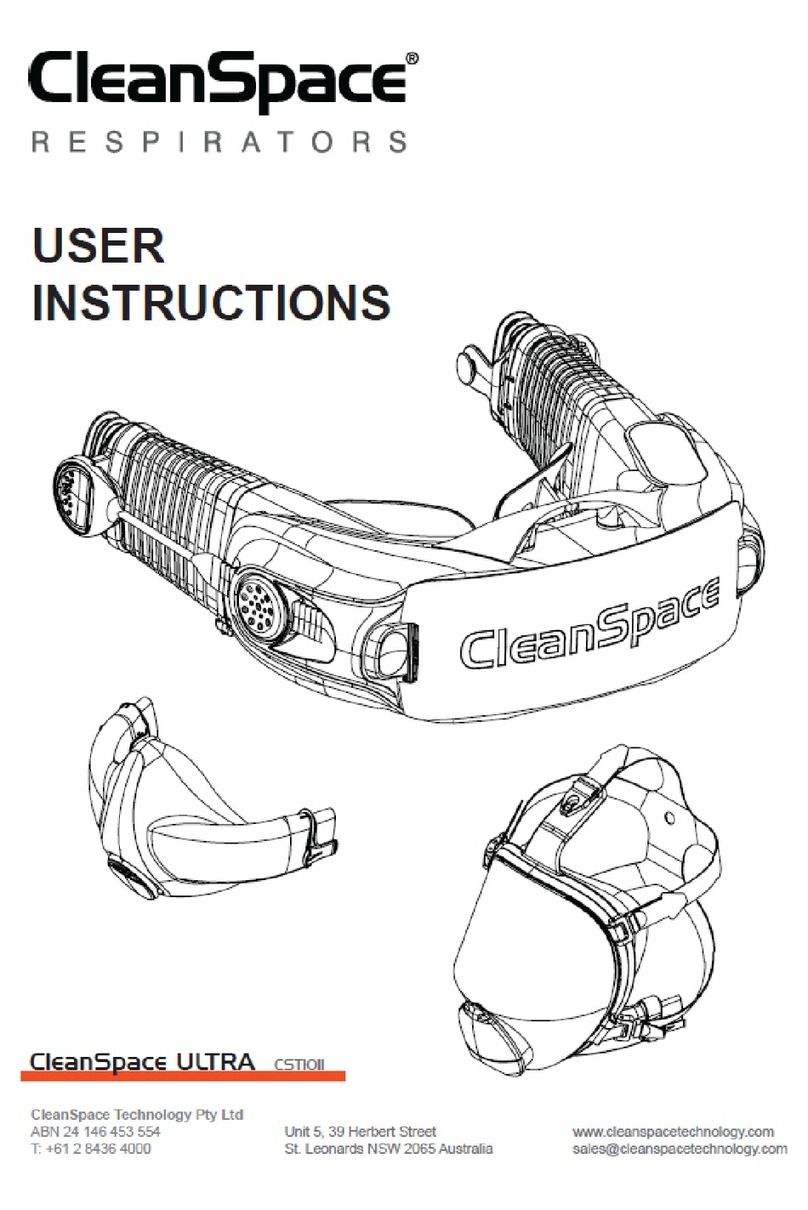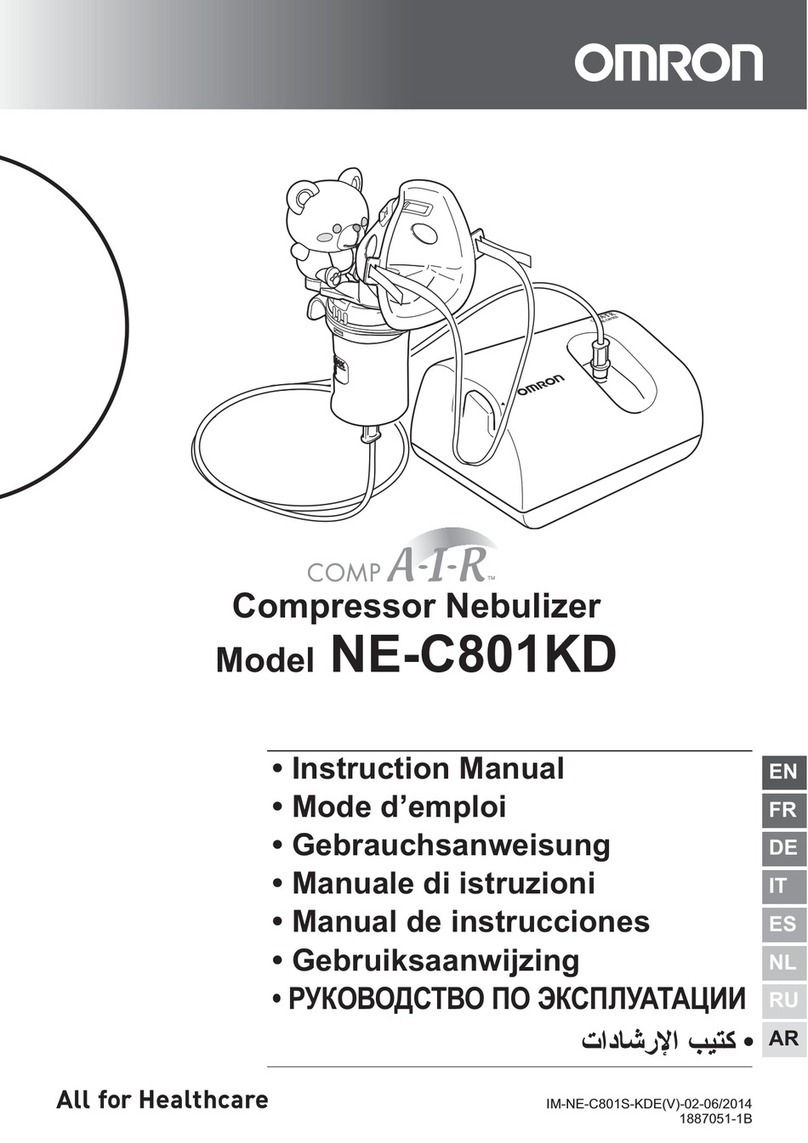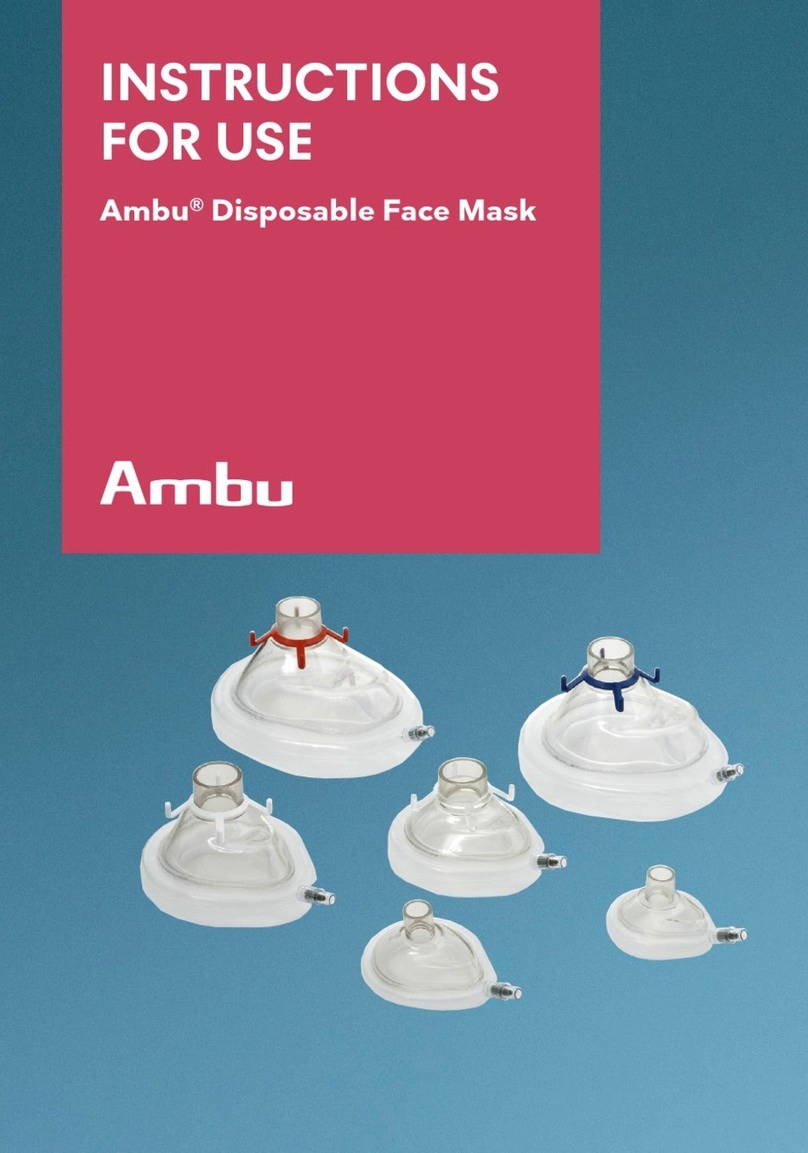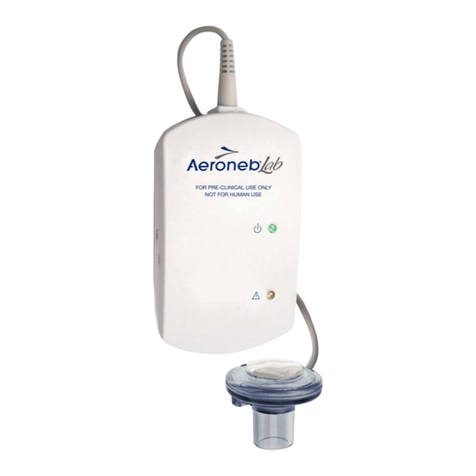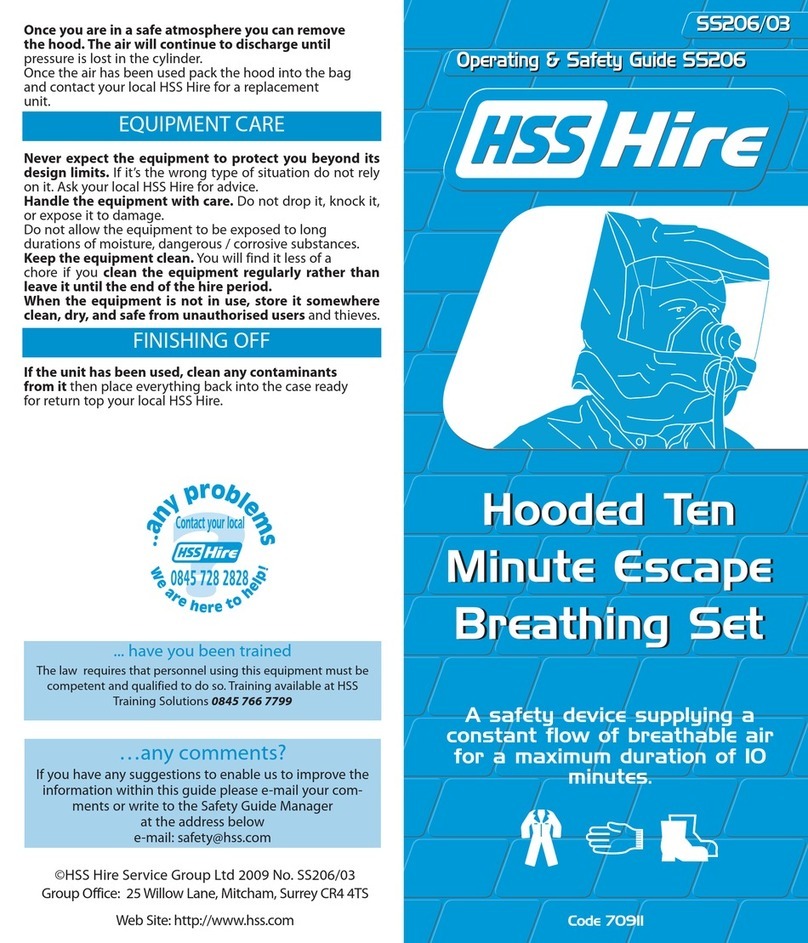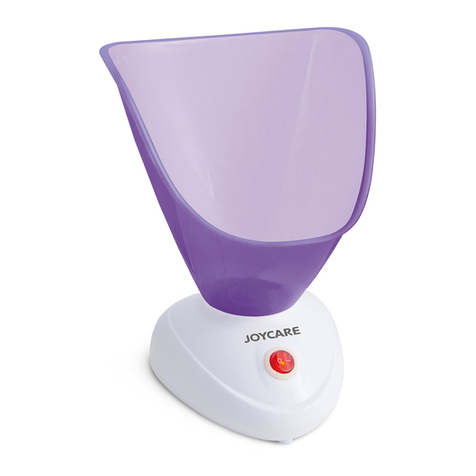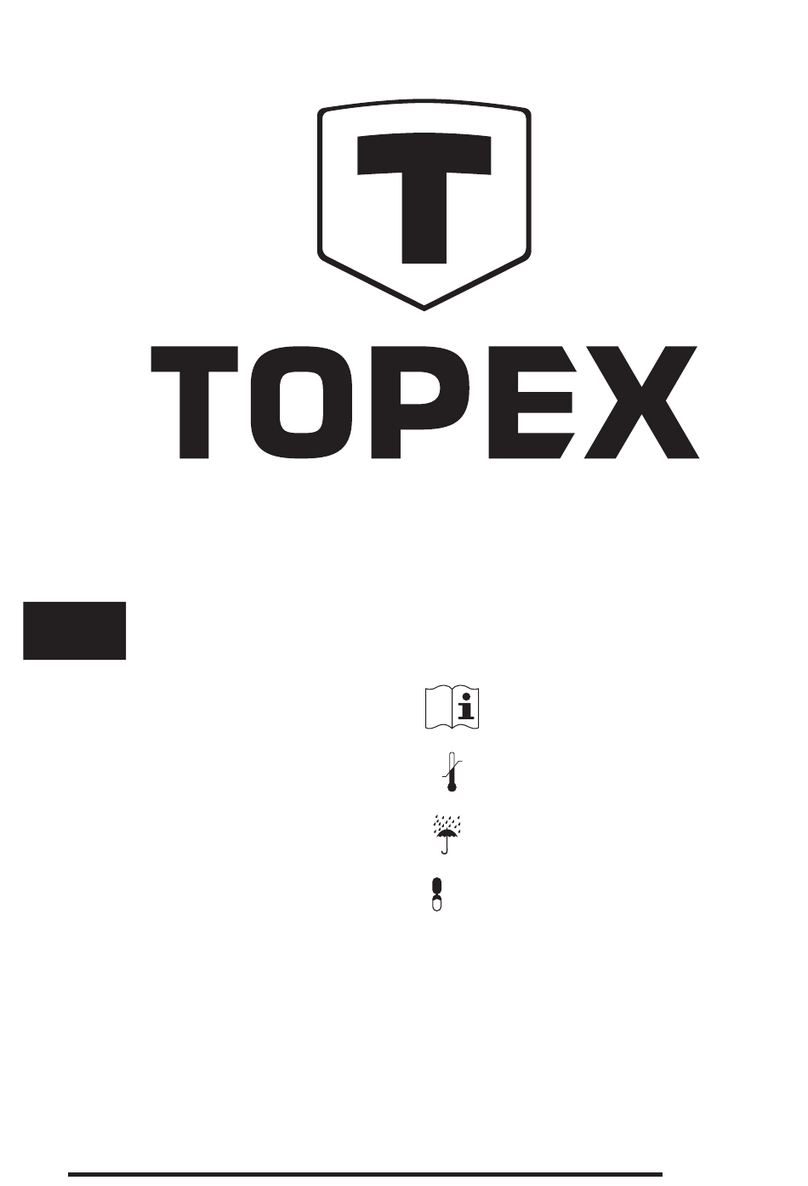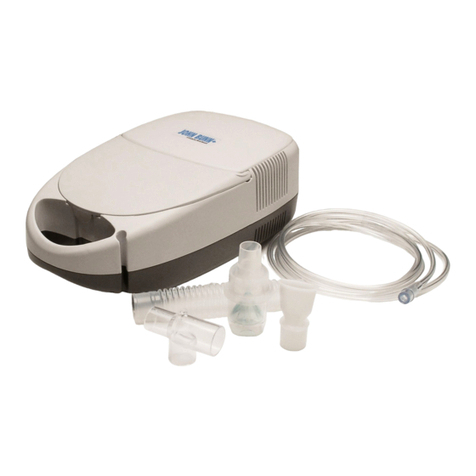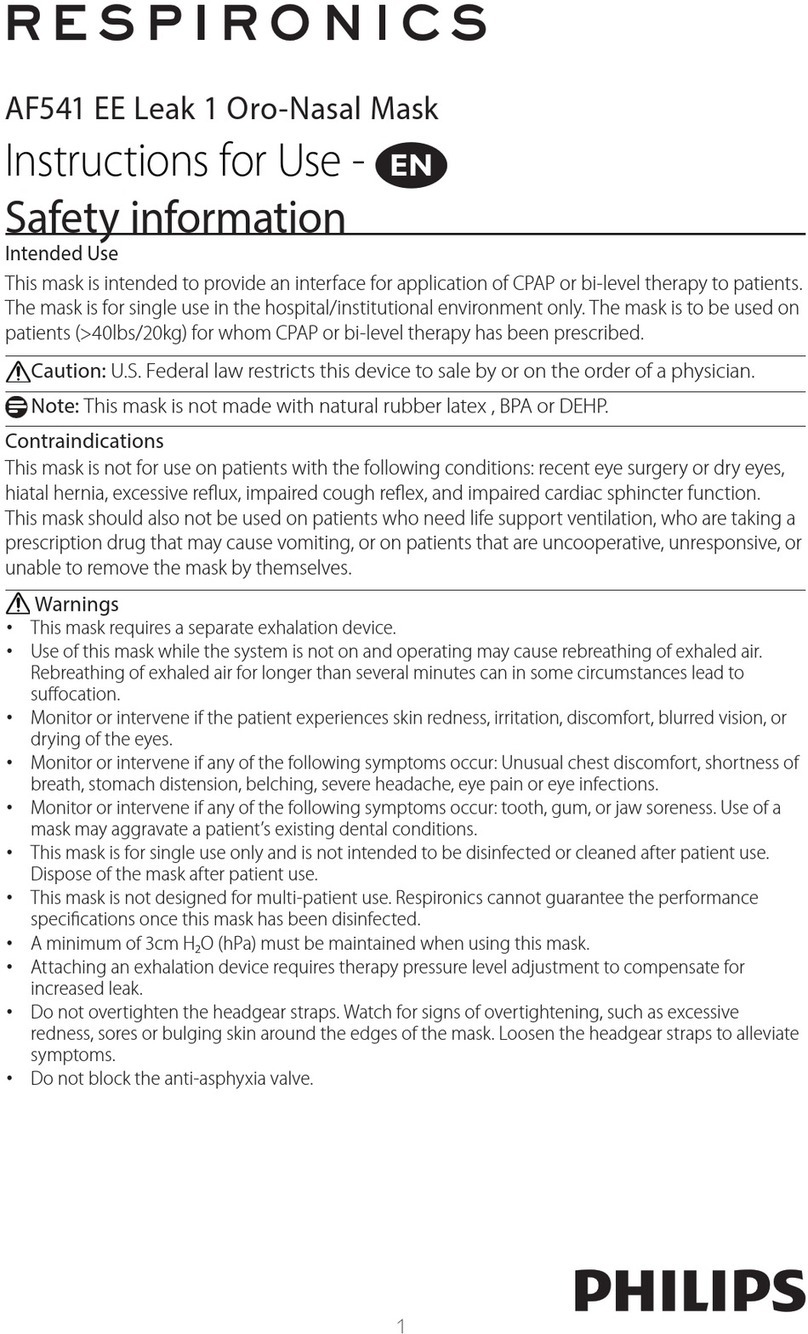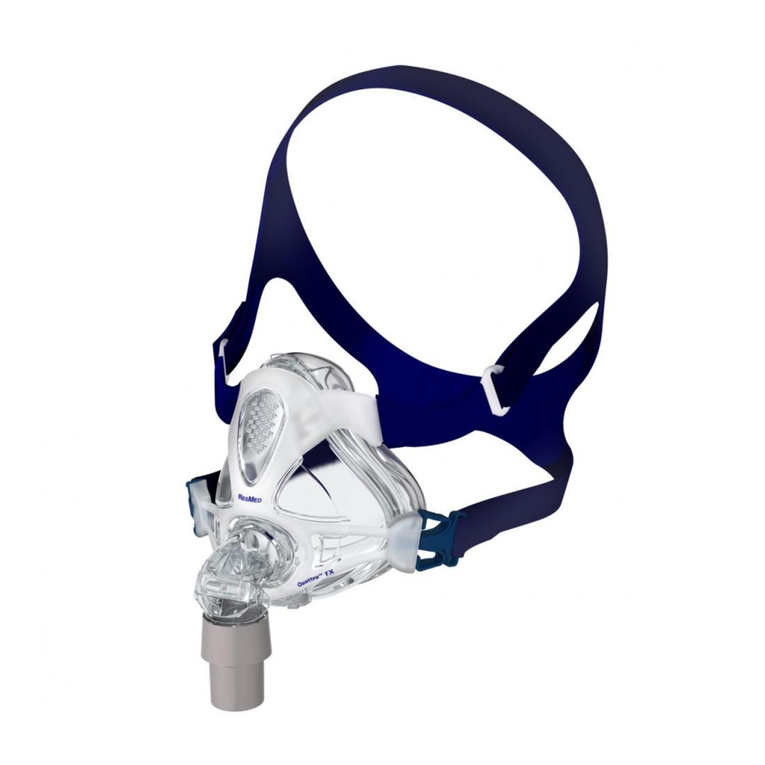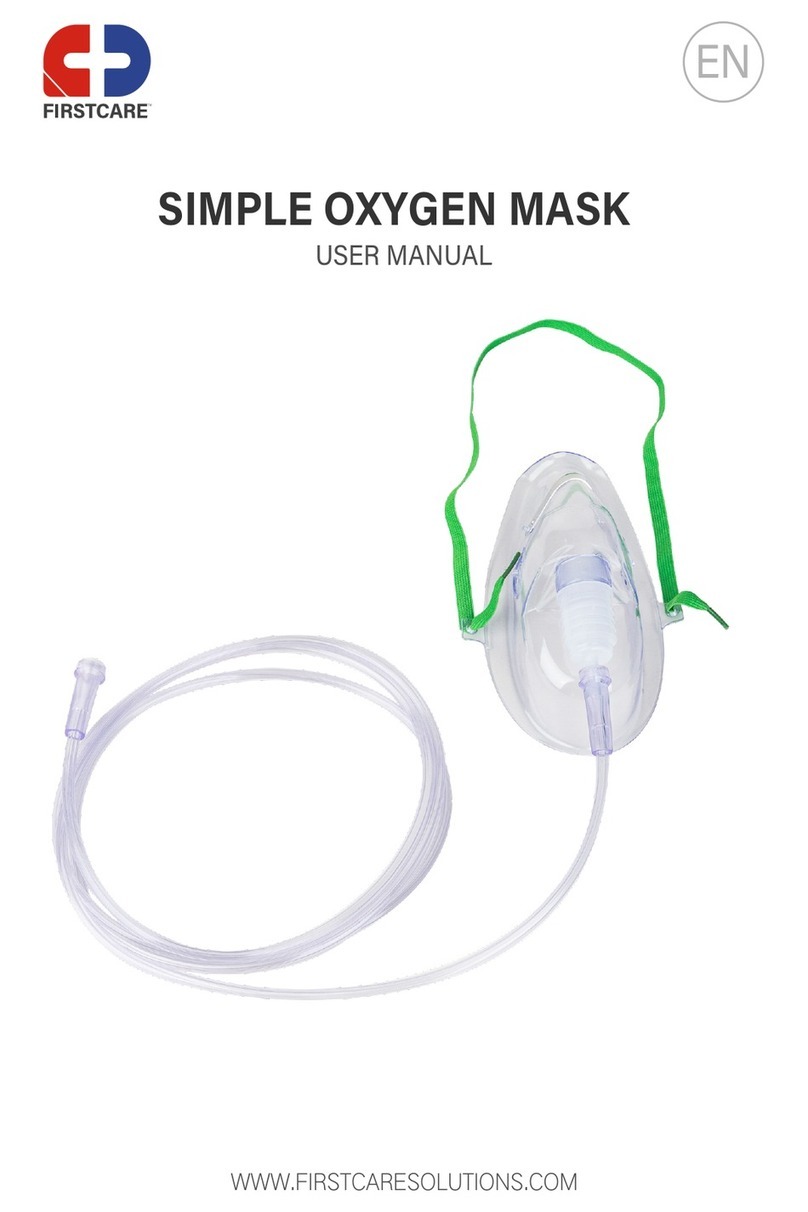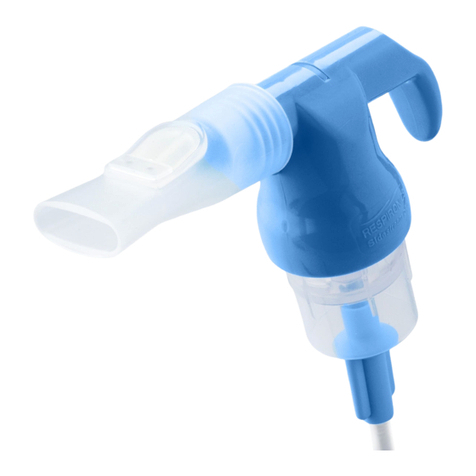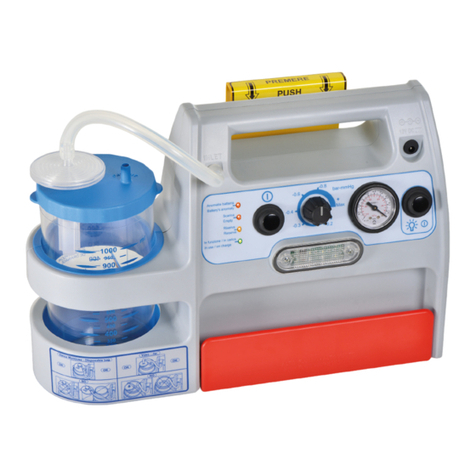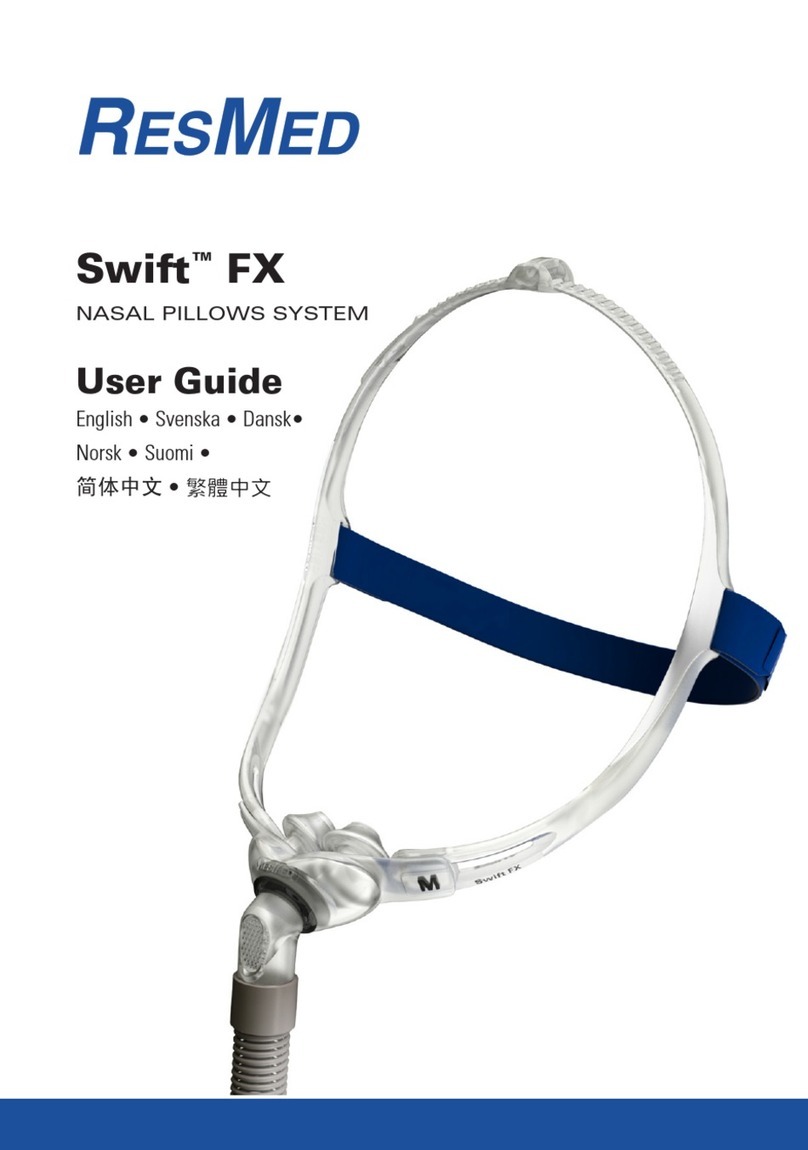CleanSpace CleanSpace2 User manual

www.cleanspacetechnology.com
Important! Before use, the wearer must read and understand these
user instructions. Keep these user instructions for reference.
CleanSpace2
Powered Respirator
USA –English
TC-21C-1065
www.cleanspacetechnology.com
USER
INSTRUCTIONS

2
1. Contents
1. Contents............................................................................................................................................................... 2
2. Forward................................................................................................................................................................ 2
3. System Description..............................................................................................................................................3
4. List of Warnings within these User Instructions................................................................................................... 3
5. NIOSH –Approval, Cautions and Limitations .....................................................................................................4
6. S - Special or Critical User Instructions...............................................................................................................5
7. Limitations of Use ................................................................................................................................................ 5
8. Respirator Program Management ....................................................................................................................... 6
9. System Components............................................................................................................................................ 7
10. Controls and Indicators........................................................................................................................................ 9
11. Mask Fitting........................................................................................................................................................10
12. Using CleanSpace2...........................................................................................................................................11
13. Entering and Exiting the Contaminated Area ....................................................................................................19
14. Working in Noisy Environments.........................................................................................................................20
15. Fitting & Changing the Filter..............................................................................................................................21
16. Battery Information.............................................................................................................................................25
17. Cleaning.............................................................................................................................................................27
18. Periodic Maintenance & Checking.....................................................................................................................28
19. Specifications.....................................................................................................................................................29
20. Product and Accessory information...................................................................................................................30
21. Product Warranty...............................................................................................................................................31
Read these instructions in conjunction with the appropriate CleanSpace™filters and accessories instructions.
WARNING
This product is part of a system that helps protect against certain airborne contaminants. Misuse
may result in sickness or death. For proper use, see your Occupational Health Specialist, these
user instructions or contact PAFtec Customer Service on 1 888 804 0038
2. Forward
Read all instructions and warnings before using this device. Keep these user instructions for reference. If you have
questions regarding this system contact PAFtec Customer Service on 1 888 804 0038 or e-mail
support@cleanspacetechnology.com

3
3. System Description
The PAFtec CleanSpace2 is a complete NIOSH approved respiratory system. When used in accordance with its
NIOSH approval, the respirator helps to provide respiratory protection against particulates. CleanSpace2 does not
provide protection against vapours or gasses and is not an intrinsically safe system. See the NIOSH Approval
Section of these user instructions for additional information on approvals.
The components of the CleanSpace2 system are shown in Section 9. The blower draws ambient air through the high
efficiency filter (and filter adaptor if used) and supplies filtered air to the wearer via the mask. CleanSpace2 is a
breath responsive respirator which means that it blows harder during inhalation and more softly during exhalation.
The device continuously adjusts fan speed to maintain positive pressure in the mask. Should the filter become
blocked, an audible alarm will sound and the “Filter” light on the keypad will be illuminated. If the battery voltage falls
below the minimum required to sustain the designed flow rate, an audible alarm will sound.
WARNING
Properly selected, used and maintained respirators help to protect against certain airborne
contaminants. It is essential to follow all instructions and government regulations on the use of this
product, including wearing the complete respirator system during all times of exposure, in order for
the product to help protect the wearer. Misuse of respirators may result in overexposure to
contaminants and lead to sickness or death. For proper use, see your Occupational Health
Specialist, these user instructions or contact PAFtec Customer Service on 1 888 804 0038
4. List of Warnings within these User Instructions
WARNING
This product is part of a system that helps protect against certain airborne contaminants. Misuse may result in sickness or death. For proper use, see your
Occupational Health Specialist, these user instructions or contact PAFtec Customer Service on 1 888 804 0038
WARNING
Properly selected, used and maintained respirators help to protect against certain airborne contaminants by reducing concentrations in the wearer’s breathing
zone. It is essential to follow all instructions and government regulations on the use of this product, including wearing the complete respirator system during all
times of exposure, in order for the product to help protect the wearer. Misuse of respirators may result in overexposure to contaminants and lead to sickness
or death. For proper use, see your Occupational Health Specialist, these user instructions or contact PAFtecCustomer Service on 1 888 804 0038
No PAPR can fully protect you if you are not clean shaven. CleanSpace2 is not suitable for users with facial hair.
IF A SATISFACTORY FIT FACTOR CANNOT BE ACHIEVED WITH ANY OF THE MASKS, CLEANSPACE2 MUST NOT BE USED
DO NOT USE COMPRESSED AIR OR A BRUSH TO CLEAN THE FILTER!
HEPA FILTERS ARE VERY EASILY DAMAGED BY THE USE OF COMPRESSED AIR OR BY BRUSHING.
Misuse of CleanSpace2 by cleaning the filter may result in overexposure to contaminants and lead to sickness or death.
IF A SATISFACTORY FIT CANNOT BE ACHIEVED, DO NOT ENTER THE CONTAMINATED ZONE
Be sure to remove the Seal Check Cap before entering the contaminated area. The Cap blocks the exhalation valve, making it more difficult for your
exhaled air to be expelled from the mask. Failure to remove the cap will lead to build-up of Carbon Dioxide in the mask, and may result in headache or
dizziness.
Never leave the Cap in place for more than 2 minutes!
DO NOT REMOVE THE RESPIRATOR UNTIL YOU HAVE
VACATED THE CONTAMINATED AREA unless you have pressing health reasons to do so (for instance you are experiencing dizziness and believe
removing the respirator while you leave the contaminated area may help)
IT IS ESSENTIAL THAT THE CORRECT FILTER TYPE IS SELECTED
FOR THE CHOSEN APPLICATION.
If the blocked filter alarm is triggered (2 beeps, repeated every second, red LED flashes), leave the contaminated area immediately and replace the filter.
Operating the respirator after the blocked filter alarm has sounded can cause the flow to fall below the manufacturer’s minimum designed flow, which
may result in overexposure to contaminants and lead to sickness or death.
DO NOT USE COMPRESSED AIR OR ANY OTHER MECHANICAL METHOD TO CLEAN THE FILTER!
HEPA FILTERS ARE VERY EASILY DAMAGED BY THE USE OF COMPRESSED AIR OR BY BRUSHING.
Misuse of CleanSpace2 by cleaning the filter may result in overexposure to contaminants and lead to sickness or death.
Use only NIOSH-approved CleanSpace™filters with the CleanSpace2™respirator. If used with other filters CleanSpace2 is not NIOSH approved. Use of
other filters may result in overexposure to contaminants and lead to sickness or death.

4
CleanSpace2 is not intrinsically safe. Do not use in flammable or explosive atmospheres. Doing so may result in injury or death.
Always correctly use and maintain the internal lithium ion battery packs. Failure to do so may result in fire or explosion or could adversely affect
respirator performance and result in injury, sickness or death.
-Do not charge the on-board battery with unapproved chargers, in enclosed cabinets without ventilation, near flammable liquids or gasses, or near
sources of high heat
- Do not immerse the device in water
- Do not use, charge or store the device outside the recommended temperature limits
If the battery alarm sounds (3 beeps, repeated every second), leave the contaminated area immediately and re-charge the battery.
Operating the respirator after the low battery alarm has sounded can cause the flow to fall below the manufacturer’s minimum designed flow, which
may result in overexposure to contaminants and lead to sickness or death.
The Flow Test is not a battery charge test. Three LEDs means that, as of the moment it is tested, the unit can deliver high flow. It does not mean the
battery is full. You must check the battery condition separately. See Section 16.
IN THE EXTREMELY RARE CIRCUMSTANCE THAT THE BATTERY
IS DAMAGED AND ELECTROLYTE COMES IN CONTACT WITH EYES,
FLUSH WITH WATER IMMEDIATELY AND SEEK URGENT MEDICAL ATTENTION
WARNING: NEVER DRY THE MASK OR EXHALATION VALVE WITH A CLOTH THAT MAY LEAVE BEHIND LINT.
Lint contamination of the exhalation valve may cause it to leak, resulting in overexposure to contaminants and lead to sickness or death.
WARNING: The blower contains a battery, sensitive electronics and a motor. NEVER immerse it in water or use anything wetter than a damp cloth to
clean it.
WARNING: NEVER CLEAN THE FILTER WITH COMPRESSED AIR OR A BRUSH. HEPA FILTERS ARE EASILY DAMAGED BY THE USE OF
COMPRESSED AIR OR BY BRUSHING.
Misuse of CleanSpace2 by cleaning the filter may result in overexposure to contaminants and lead to sickness or death.
You must recalibrate the internal pressure sensor any time that your CleanSpace2 is exposed to changes in temperature of more than 36°F (20°C).
WHEN FITTING A NEW FILTER THE BLOCKED FILTER ALARM SHALL BE TESTED BEFORE THE
RESPIRATOR IS PUT BACK INTO SERVICE. SEE “TESTING THE BLOCKED FILTER ALARM” AT THE
END OF THIS SECTION
5. NIOSH –Approval, Cautions and Limitations
NIOSH APPROVAL
CleanSpace2 is a NIOSH-approved respirator system. Refer to these User Instructions and to the NIOSH approval
label provided with each CleanSpace2 for a listing of components that can be used to form a NIOSH-approved
respirator.
NIOSH CAUTIONS AND LIMITATIONS
A - Not for use in atmospheres containing less than 19.5 percent oxygen.
B - Not for use in atmospheres immediately dangerous to life or health.
C - Do not exceed maximum use concentrations established by regulatory standards.
F - Do not use powered air-purifying respirators if airflow is less than four cfm (115 lpm) for tight fitting facepieces or
six cfm (170 lpm) for hoods and/or helmets.
I –Contains electrical parts that may cause an ignition in flammable or explosive atmospheres
J - Failure to properly use and maintain this product could result in injury or death.
L - Follow the manufacturer's User's Instructions for changing cartridges, canister and/or filters.
M - All approved respirators shall be selected, fitted, used, and maintained in accordance with MSHA, OSHA, and
other applicable regulations.
N - Never substitute, modify, add, or omit parts. Use only exact replacement parts in the configuration as specified
by the manufacturer
O - Refer to User's Instructions, and/or maintenance manuals for information on use and maintenance of these
respirators.
P - NIOSH does not evaluate respirators for use as surgical masks.
S - Special or critical User's Instructions and/or specific use limitations apply. Refer to User's Instructions before
donning.

5
6. S - Special or Critical User Instructions
This respirator contains a system for synchronising with your breathing and regulating mask pressure. This system
requires re-calibration whenever it experiences a change in temperature of more than 36°F (20°C). It is best
practice to also re-calibrate if the unit has been in storage, particularly if the storage temperature is not
known.
For the most accurate battery charge indication, the respirator must be plugged into its charger. To be sure it is fully
charged, plug in the charger and wait for all 3 LEDs to light solidly without flashing. If the 3rd LED is flashing
rapidly, the battery is 95% charged.
7. Limitations of Use
Use this Respirator strictly in accordance with all instructions in these user instructions. Never modify or alter this
product.
Do not remove the Respirator until you have left the contaminated area,
unless you have pressing health reasons to do so (for instance you are experiencing dizziness and
believe removing the respirator while you leave the contaminated area may help).
Only suitable for use by clean-shaven personnel. Facial hair under the seal reduces protection and is not
permitted.
This Respirator DOES NOT PROTECT YOUR EYES. In conditions that may damage or irritate eyes, use
protective eyewear.
Only use your respirator with the parts and accessories listed on the Approval Label.
Do not use the respirator unless it is powered and running normally.
Do not use the respirator while it is being charged via the AC adaptor.
Do not use in airborne contaminant concentrations above those specified in your national regulations
Do not use for respiratory protection against unknown atmospheric contaminants or when concentrations
of contaminants are unknown or immediately dangerous to life or health (IDLH).
Do not use in oxygen deficient or oxygen enriched atmospheres. Do not use in flammable or explosive
environments.
Only for use by trained personnel.
Filters need to be changed regularly. The frequency of change depends on use and the concentration of
contaminants in the atmosphere.
Do not use for escape purposes. National regulations may impose specific limitations on the use of filters
depending on the filter class and the facemask used.
LEAVE THE CONTAMINATED AREA IMMEDIATELY IF:
Respirator warning lights and/or sounds activate for low battery or blocked filter
Any part of the respirator is damaged
Air flow into the mask decreases or stops
Breathing becomes difficult or increased resistance occurs
You feel dizzy or your airway is irritated
You can taste or smell contaminants
Your respirator is suitable for use in the following atmospheric conditions:
Temperature: 14°F to 113°F (-10°C to 45°C)
Relative humidity: 0 to 90% non-condensing
The respirator will stop functioning if its internal temperature rises above 140°F ( 60°C) or falls below 14°F (-10°C)
If the respirator has been used in an area that has caused it to become contaminated with a substance requiring
special decontamination procedures it should be placed in a suitable container and sealed until it can be
decontaminated.

6
Do not disassemble the respirator case. There are no user serviceable parts inside.
Failure to follow all instructions on the use of this product, and/or failure to use the respirator during times of
exposure, may lead to adverse effects on the wearer’s health and may render the warranty void.
WARNING
This product is part of a system that helps protect against certain airborne contaminants. Misuse
may result in sickness or death. For proper use, see your Occupational Health Specialist, these
user instructions or contact PAFtec Customer Service on 1 888 804 0038
8. Respirator Program Management
Occupational use of respirators must be in compliance with applicable health and safety standards. By United States
regulation employers must establish a written respiratory protection program meeting the requirements of the
Occupational Safety and Health Administration (OSHA) Respiratory Protection standard 29 CFR 1910.134 and any
applicable OSHA substance specific standards. For additional information on this standard contact OSHA at
www.OSHA.gov. In Canada, CSA standard Z94.4 requirements and/or the requirements of the applicable jurisdiction
must be met. Contact an industrial hygienist or PAFtec Technical Service with questions concerning the applicability
of the respirator to your job requirements.

7
9. System Components
Figure 1 - System Components

8
PARTS OF THE RESPIRATOR
Your respirator can be used with either a standard filter (PAF-1102 / PAF-1103) or with a high capacity filter (PAF-
1003). The high capacity filter is used with a filter adaptor (PAF-0038) and both standard filters are used with a filter
cover (PAF-1095). Most functions of the respirator are the same regardless of which filter is being used. Where there
are differences they are explained in this manual.
Respirator with Standard Filter and Filter Cover
Respirator with High Capacity Filter and Filter Adaptor
Through this manual reference is made to various commonly-used components and features of the machine.
Familiarise yourself with these parts before reading the rest of the manual. See Figure 2.
Exhalation Valve
Figure 2 - Parts of the Respirator
Mask Release
Button
Adjust Button
Bellows

9
10. Controls and Indicators
POWER BUTTON
This button is used to switch between the three (3) operating Modes: “On”, “Standby” and “Off”
Mode.
i) Standby Mode is when the green battery indicator lights are on, the motor is not running and
there is no airflow to the mask. The respirator will automatically switch to Standby Mode within ten
(10) seconds of the user taking it off. If the respirator is in Off Mode it will switch to Standby Mode when the Power
button is pressed.
ii) On Mode is when the respirator is being worn, the motor is running and there is air flow to the mask. The motor
will start (called On Mode) when the respirator detects a change in pressure in the mask triggered by your breathing.
In On Mode you should hear the motor running and feel the airflow on your face. You can also switch to On Mode
(start the motor) from Standby Mode by pressing the Power button once.
iii) Off Mode is when the green battery indicator lights are off and the motor is not running and there is no air flow to
the mask. The respirator automatically switches into Off Mode three (3) minutes after it has been removed from the
user’s face and the sensors detect that there is no breathing.
To conserve battery life, the respirator is designed to automatically switch from On Mode to Standby then to Off
Mode when not being worn.
Important: CleanSpace2™switches into On Mode when it is in Standby Mode and the wearer starts to breathe. The
respirator can only switch into On Mode from Standby Mode.
FLOW TEST BUTTON
This button is used to check that the respirator is able to deliver its minimum designed flow. Pressing it
once, when the CleanSpace2 is in Standby Mode (not ON Mode), starts the flow test which lasts about 5
seconds. See Section 12 for instructions on running the flow test.
BATTERY INDICATOR LIGHTS
Your respirator is equipped with an indicator of battery charge. There are three (3) battery indicator
lights. With the charger plugged in and three green lights lit, the battery is fully charged and typically
has six (6) hours of operating time. The respirator should be fully charged before use.
If you need to be sure the battery is 100% charged plug in the charger. Even if the battery is fully charged, the 3rd
LED will flash for at least three minutes while the respirator checks its condition. Once all 3 LEDs light solidly
without flashing the battery is at 100%
For how to assess the level of charge, see Section 16.
When the battery approaches a level at which it would not be able to supply the Manufacturer’s Minimum Design
Flow, an alarm sounds (3 beeps, repeated once per second). All green battery lights are extinguished. If the low
battery alarm sounds you must leave the contaminated area immediately and recharge the battery.

10
Operating time is strongly affected by work rate, altitude, and other factors. The operating times quoted
above are average durations at moderate work rates at sea level. Actual operating times may vary widely
from average durations.
FILTER WARNING ALARM
CleanSpace2™has a Filter Warning Alarm, which is triggered when the filter is blocked. If the Filter
Warning Alarm sounds (two beeps, repeated once per second) or the Filter Warning Alarm light
comes on, you must move out of the contaminated area, and change the filter.
11. Mask Fitting
Before you use your respirator you must determine the right mask for your face and know how to adjust the machine
to achieve a good fit.
It is vital that your mask is the right size for your face and fits properly. Mask fitting must be carried out by a
specialist / designated mask fitter. The fit must be confirmed by a quantitative fit test performed according to
OSHA regulations 1910.134.
To carry out a quantitative fit test your specialist mask fitter will require PAF-0025 PortaCount Adaptor and the
accompanying S005-7174 Quantitative Fit Test Instructions. The PortaCount Adaptor is an accessory that fits
between the mask and the exhalation valve and allows the air in the mask to be sampled. It comes with detailed
instructions on how to carry out a quantitative fit test.
No PAPR can fully protect you if you are not clean shaven. CleanSpace2 is not suitable for
users with facial hair.
MASK SELECTION GUIDELINES
No set of guidelines can ensure that you have the right size mask for your face. You must confirm the fit
with a quantitative fit test. But the table below will help your mask fitting specialist to select the mask most likely to
fit you, and may therefore save time.

11
Once you have achieved an acceptable mask fit and confirmed it with a quantitative fit test, record your information
in the table below.
Name
Mask Size
Neck Pad
Thick / Thin (Circle one)
Harness Front Straps
Position
(e.g. “4th hole from the end of the strap”)
Date of Quantitative Fit Test
Fit Factor on Test
IF A SATISFACTORY FIT FACTOR CANNOT BE ACHIEVED WITH ANY OF THE MASKS,
CLEANSPACE2 MUST NOT BE USED
12. Using CleanSpace2
Complete the following five steps each time you use your respirator.
STEP 1 - INSPECT
Before each entry into a contaminated area, the following inspections must be performed:
Visually check the entire respirator system including the blower, mask, harness, louvered filter cover or
filter adaptor and filter. If parts are missing or damaged replace them only with approved parts before
proceeding. Check the top and bottom case of the blower, and the Filter Adaptor for cracks or other
damage. Do not use the device if there is any damage.
Remove the HE filter and check it carefully. The seal must be clean and free from damage of any kind. If
necessary it can be cleaned with a cloth dampened with water. Examine the visible internal surfaces for
any sign that dust has leaked past a damaged seal. If found, replace the filter. The body of the filter must
not be cracked or show any sign of damage. Examine the filter carefully for any sign that it has sustained
an impact or been scratched. If any sign of impact or scratching is found, discard the filter. Refit the HE
filter (see Changing the Filter, below)
DO NOT USE COMPRESSED AIR OR A BRUSH TO CLEAN THE FILTER!
HEPA FILTERS ARE VERY EASILY DAMAGED BY THE USE OF COMPRESSED AIR OR BY
BRUSHING.
Misuse of CleanSpace2 by cleaning the filter may result in overexposure to contaminants and
lead to sickness or death.
Check that the battery is fully charged by pressing the power button. All three battery LEDs must light.
See Section 16.
Check both bellows for splits or holes. Check that the bellows have not become distorted so as to
partially or fully close the air path to the mask.
Check the mask to ensure that there are no cracks, tears or dirt; check the mask is not distorted.
Check the exhalation valve for damage or dirt build up. If it is dirty, remove the exhalation valve cover.
Remove any dirt, hairs or anything that could affect the seal of the valve against its seat. Check that the
valve seat is clean. Reinstall the valve cover. If the valve is damaged, replace the mask.
Check the harness is intact and has good elasticity. It must be adjusted to support some of the weight of
the respirator.

12
STEP 2 –CALIBRATE
This respirator contains a system for synchronising with your breathing and regulating mask pressure. This system
requires re-calibration whenever it experiences a change in temperature of more than 36°F (20°C). It is best
practice to also re-calibrate if the unit has been in storage, particularly if the storage temperature is not
known. To re-calibrate:
1. Remove the mask (if fitted). The Flow Test Cap must not be fitted.
2. Remove the filter from the respirator. If using a standard filter, close the filter cover. If using the Filter
Adaptor leave it in place. Place the respirator on a stable surface such as a table.
3. With the respirator in standby mode (one or more green LEDs lit), press and hold both the Power button
and the Filter Test button.
If no LEDs are lit, press the Power button once to enter standby mode.
4. When both the blue and red LEDs light, release both buttons. Leave the respirator sitting still.
5. After 5 –10 seconds the motor will start and run for 5 –10 seconds.
6. When the motor stops, calibration is complete.
7. Re-fit the filter.
Important Note: Failure to remove the filter prior to calibration will result in poor battery life. In order to restore
performance of the respirator, calibration must be performed again with the filter removed.
STEP 3 –TEST FLOW RATE
This test checks that the machine is able to deliver the Manufacturer’s Minimum Design Flow of 115 litres/minute.
1. Fit the yellow Flow Test Cap to the left bellow. See Figure 3.
Figure 3 - Flow Test
2. Make sure nothing is blocking the Flow Test Cap or the filter inlet. Place the respirator flat on a table or other
support.
3. Press and release the button marked “Flow Test”
4. The respirator automatically runs the Flow Test. The motor will run fast and air will be discharged from the
Flow Test Cap.
5. After 2 seconds the respirator reports the result of the test using the LEDs on the keypad. Use the table below
to interpret the LEDs.
To avoid unnecessary filter
changes, it is important to fit
the Flow Test Cap to the LEFT
bellow.
No air flows out of the right
bellow. Fitting the Flow Test
Cap to the right bellow will
result a FAIL result, even if the
filter is clean and battery fully
charged.

13
LIGHTS
Meaning
3 LEDs:
PASS (Excellent: flow >180 l/min)**
2 LEDs:
PASS (Good)**
1 LED:
PASS (Acceptable)
ALL LEDs
FLASH
FAIL (Flow <115 l/min)
Do not use the respirator until a new filter has been fitted and / or battery charged
and the test has been repeated with a PASS result.
Reset the respirator by pressing the Power button. Fully charge the battery and / or
replace the filter. Repeat the flow test. If filter is new and battery fully charged but the
respirator fails the test, contact PAFtec and do not use until it has been evaluated
** This test is not a battery charge test. Three LEDs means that, as of the moment it is tested, the unit can
deliver high flow. It does not mean the battery is full. You must check the battery condition separately. See
Section 16.
6. Remove the yellow Flow Test Cap and store for later use.
STEP 4 - DON THE RESPIRATOR
NOTE –please read STEP 4 all the way through before beginning to don the respirator
Locate your blower, mask, neck pad and harness. Make sure the mask and neck pad are of the size that you
used for your last successful quantitative fit test. These sizes should be recorded in this manual (see Section 11
above).
Fit a mask to CleanSpace2
Examine the mask AirClips. One is open and one is closed. Find the one that is closed. Seen
from above it is on the right hand side. See Figure 4
Locate the right hand blower AirClip. It is on the same side of the blower as the “Flow Test”
button.See Figure 5
Figure 4 - Right hand (closed) mask AirClip
Figure 5 - Right hand blower AirClip
Join the AirClip, so that the mask is attached to the blower. See Figure 6 and Figure 7.

14
Figure 6 - Join AirClip
Figure 7 - Mask on Blower (Note - connection is on
right hand side)
Check that the mask is the right way up! The pointed, nose section of the mask must face
up, in the same direction as the keypad. See Figure 8.
Figure 8 - Nose section of mask and keypad must both face up
Leave the other mask arm and bellow free until you are fitting the Respirator.
Familiarise yourself with the Adjust Buttons and the Mask Release Buttons. See Figure 9
Figure 9 - Mask Release Button and Adjust Button

15
Fit the Harness
Locate the strap on the harness that is made from loop-pile material. . This is the back strap.
If a neck pad is in place, remove it by pulling it away from the two strips of loop pile fabric on
the blower. Locate the section of hook material on the end of the back strap of the harness.
Fit the back strap of the harness to the blower by pressing the section of hook material on the
end of the strap against the two strips of loop pile material on the blower. See Figure 10.
Figure 10 - Harness Rear Strap
The two front straps of the harness fit to the AirClips on the mask. See Figure 11.
If unsure of your fitting, start with the 3rd hole from the end of the strap.
Figure 11 - Harness Front Strap
Make sure to use the same settings on the harness as you used in your last successful
quantitative fit test. These setting should be recorded in the table in Section 11
Fit a Neck Pad
The pad is fitted with two strips of hook fabric. Press these strips against the matching strips
of loop fabric on the blower. The centreline of the Neck Pad should align with the centreline
of the blower. Figure 1 shows the neck pad being fitted.
Rear strap fits behind neck pad

16
Figure 12 - Fitting neck pad
Make sure to fit the same size neck pad as you used in your last successful
quantitative fit test. The size (thick or thin) should be recorded in the table in Section
11
Loosen both bellows to their widest opening
Press the adjust button on the blower and pull on the bellows to extend them. See Figure 13.
Figure 13 - Adjust Button
Place the machine in Standby Mode
Press the Power button once
Don the respirator and start to breathe. (The motor should start)
Place the blower behind your neck with the bellows and mask hanging down one side. See Figure 14
Hold the mask in your left hand and the harness in your right. See Figure 15
Pull the mask around onto your face and the harness over your head. See Figure 16
Press your chin into the cup at the bottom of the mask and your nose into the top section of it.
Fasten the AirClip on your left hand side. See Figure 17 and Figure 18
Reach up and pull the harness forward to settle it on your head. See Figure 19
Press neck
pad into
place against
these strips

17
Figure 14 - Blower behind neck
Figure 15 - Left hand on mask,
right on harness
Figure 16 - Mask on face, harness
on head
Figure 17 - Fasten AirClip
Figure 18 - AirClip
Figure 19 - Settle harness
Breathe normally. The motor should start and you should feel fresh air on your face.
If the motor does not start, it was not in Standby Mode. Take the respirator off, press the
Power button to activate Standby Mode and don it again as described above.
Check the Harness
The Harness should take a little of the weight of the mask and support the blower so that the
respirator system sits level on your head. If necessary adjust the harness. This is mostly
done by shortening or lengthening the front straps of the harness, by moving between the
different button holes. Remember to shorten or lengthen each side by the same amount. The
length of the rear strap can be changed by adjusting the length of the top loop of strap where
it passes around an eye in the mesh “cap”. See Figure 20.To adjust the strap, doff the
respirator, adjust the strap, and don it again.

18
Figure 20 - Correct CleanSpace2 Position
Tighten the mask on your face
Tighten the mask until you do not feel any leaks
between the mask cushion and your face.
To tighten the mask, place one hand against the back
of the blower and the other over the front of the mask.
Push the blower forwards and the mask back,
tightening the fit. You will hear a series of clicks as the
mask is tightened. See Figure 21.
.
Be careful to tighten each side by the same amount
Figure 21 - Tightening Mask
STEP 5 –CHECK MASK SEAL
It is essential to do a fit check every time you wear a CleanSpace2
Locate PAF-1009, the red Seal Check Cap. Fit Seal Check Cap over the exhalation valve in the mask. The Cap
should snap into place. See Figure 22
.
Figure 22 - Fitting Seal Check Cap
Check that no air is flowing from the exhalation valve. Breathe normally.
Length of rear strap is
adjusted here

19
Using your fingers, feel around the perimeter of the mask for leaks. You will feel any leak as a cool flow of air over
your finger. For greater sensitivity breathe out firmly to raise the mask pressure. Wetting your fingers will make it
easier to feel tiny leaks.
If necessary tighten the mask. To tighten the mask, place one hand against the back of the blower and the other
over the front of the mask. Push the blower forwards and the mask back, tightening the fit. You will hear a series of
clicks as the mask is tightened.
Be careful to tighten each side by the same amount.
After each tightening, feel for leaks again
Tilt your head down (look at the ground) and up (look at the sky). Check that there are still no leaks. Look right and
left, checking for leaks. Adjust if necessary.
Once you can feel no leaks from the mask, the seal check is complete.
IF A SATISFACTORY FIT CANNOT BE ACHIEVED, DO NOT ENTER THE CONTAMINATED ZONE
Remove the Seal Check Cap by gently twisting the handle so that one side of the cap comes loose from the
exhalation valve. Be careful not to dislodge the exhalation valve cover. See Figure 23.
Figure 23 - Removing Seal Check Cap
Be sure to remove the Seal Check Cap before entering the contaminated area. The Cap blocks
the exhalation valve, making it more difficult for your exhaled air to be expelled from the mask.
Failure to remove the cap will lead to build-up of Carbon Dioxide in the mask, and may result
in headache or dizziness.
Never leave the Cap in place for more than 2 minutes!
13. Entering and Exiting the Contaminated Area
Prior to entering the contaminated area, complete the inspections and checks listed in these user instructions.
1. Ensure Seal Check has been done and motor is responding to your breathing
2. Check that none of the alarms are sounding.
3. Remember that if your workplace is very noisy you may not be able to hear the device alarms. In this
case you must follow the special precautions set out in Section 14.
4. Enter the work area
5. Do not remove the respirator until you have left the contaminated area, unless you have pressing health
reasons to do so (for instance you are experiencing dizziness and believe removing the respirator while
you leave the contaminated area may help).
6. Leave the contaminated area immediately if any of the following conditions occur:
a. Any part of the system is damaged
b. Airflow into the mask decreases or stops
c. The battery of filter alarms are triggered (even if only the audible or only the visible alarm
triggers)

20
d. Breathing becomes difficult
e. You feel dizzy or your vision is impaired
f. You smell or taste contaminants
g. Your face, eyes, nose or mouth become irritated
h. You suspect the concentration of contaminants may have reached levels at which this
respirator may no longer provide adequate protection.
7. You should have specific exiting and decontamination procedures as part of your workplace respiratory
protection program. Follow those procedures, together with the instructions below when removing the
respirator.
To remove the respirator, find the Mask Release Button (see Section 9) and press to release the mask from the
blower. See Figure 24.
The mask release button has a rough, dimpled finish that you can feel with your fingertips. All the other
buttons are smooth
Figure 24 - Mask Release Button
Note: The respirator motor will automatically switch off and go into Standby Mode in approximately 10 seconds
when no breath is detected. In Standby Mode, if after three (3) minutes no breath is detected, the Respirator will
automatically go into Off Mode. In Off Mode, all the battery indicator lights will be off and the motor will not be
triggered by the wearer’s breathing.
DO NOT REMOVE THE RESPIRATOR UNTIL YOU HAVE
VACATED THE CONTAMINATED AREA unless you have pressing health reasons to do so (for
instance you are experiencing dizziness and believe removing the respirator while you leave
the contaminated area may help)
14. Working in Noisy Environments
In most noisy environments the CleanSpace2 alarms are still clearly audible to the wearer. But if there is a chance
that you will not hear the alarms, you must take the following extra precautions
Never enter the contaminated zone unless all three green battery indicator lights are illuminated
Never work in the high noise area for more than four (4) hours. At the end of four hours, leave the
contaminated zone and check that
oThe filter blocked light is not illuminated; AND
oAll three green battery indicator lights are still illuminated
If two or fewer green battery indicator lights are illuminated, recharge CleanSpace2 until 3 lights are
showing again (and the 3rd one has stopped flashing)
If the filter blocked light is illuminated, change the filter
Be particularly aware of difficulty breathing or of the air flow stopping. If these things happen, exit the
contaminated zone immediately.
Other manuals for CleanSpace2
2
Table of contents
Other CleanSpace Respiratory Product manuals
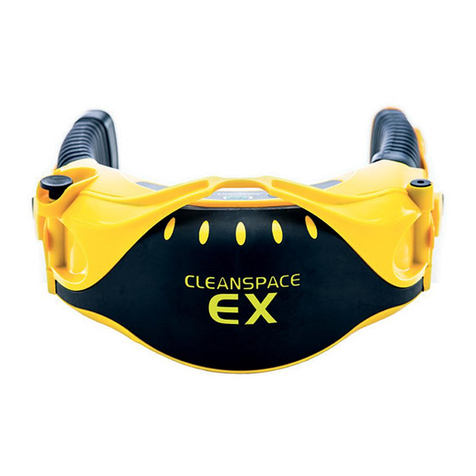
CleanSpace
CleanSpace EX User manual
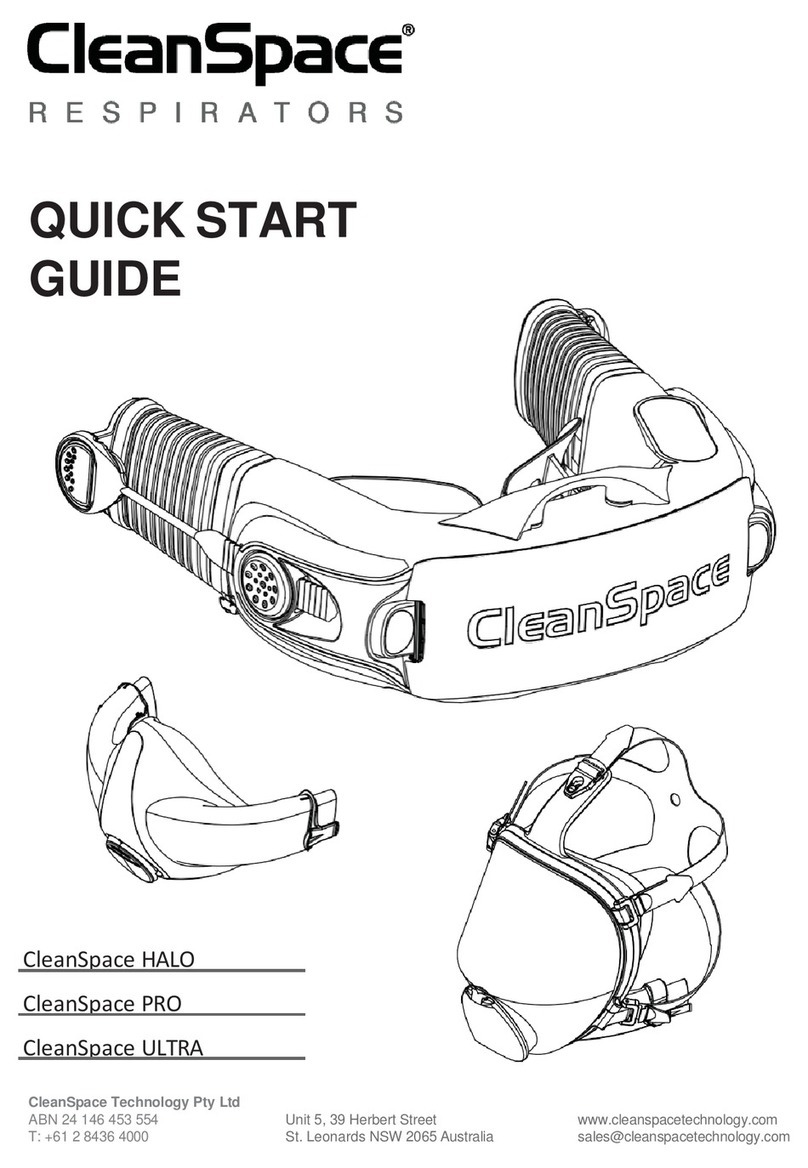
CleanSpace
CleanSpace HALO User manual
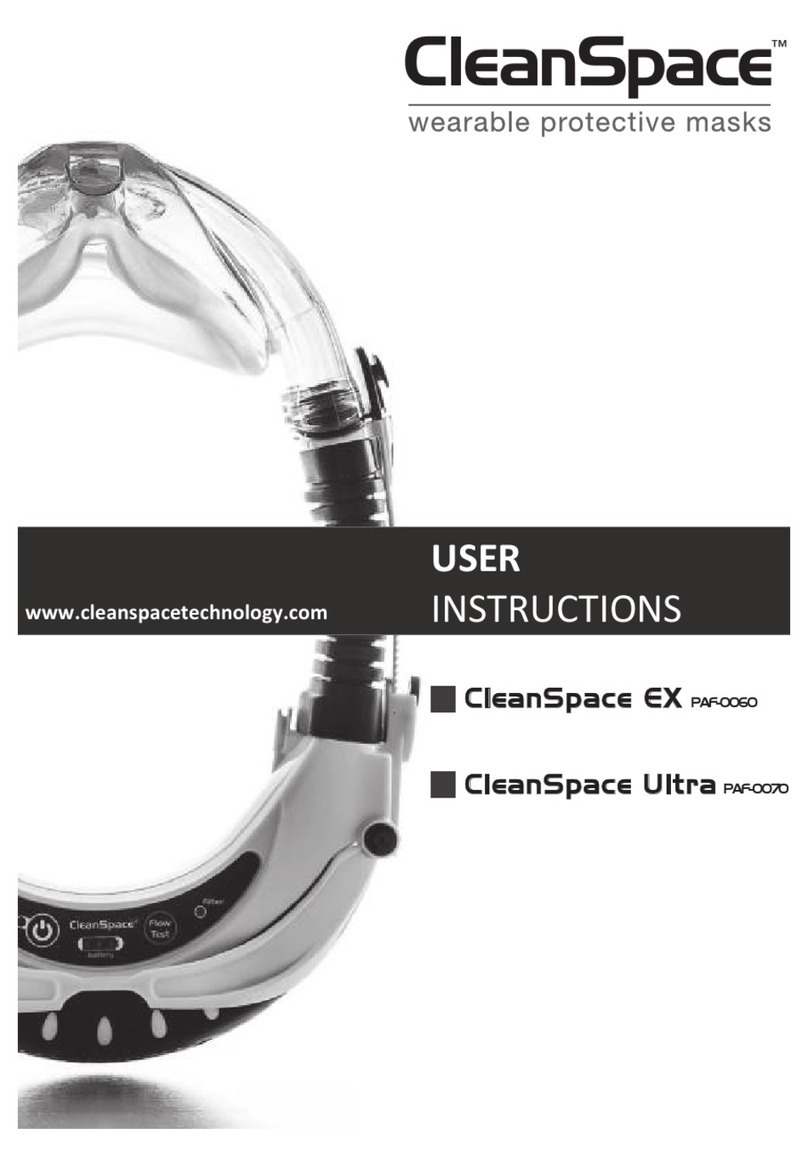
CleanSpace
CleanSpace PAF-0060 User manual
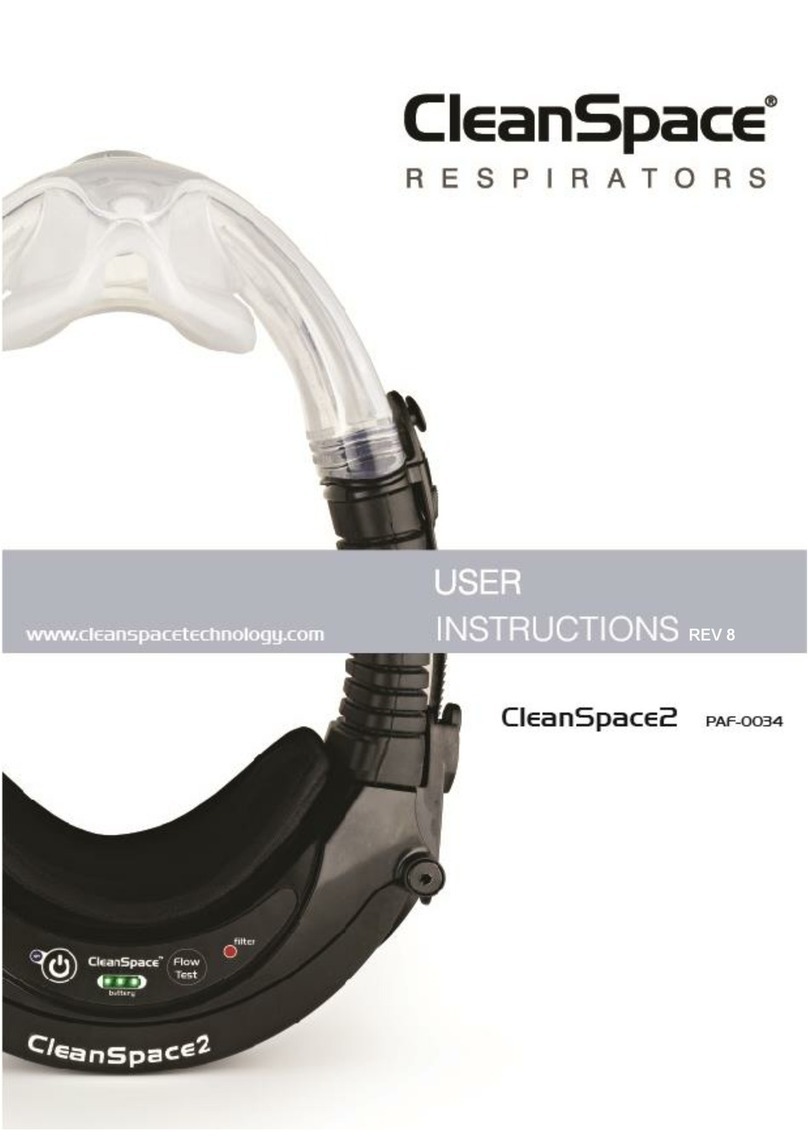
CleanSpace
CleanSpace CleanSpace2 Installation instructions
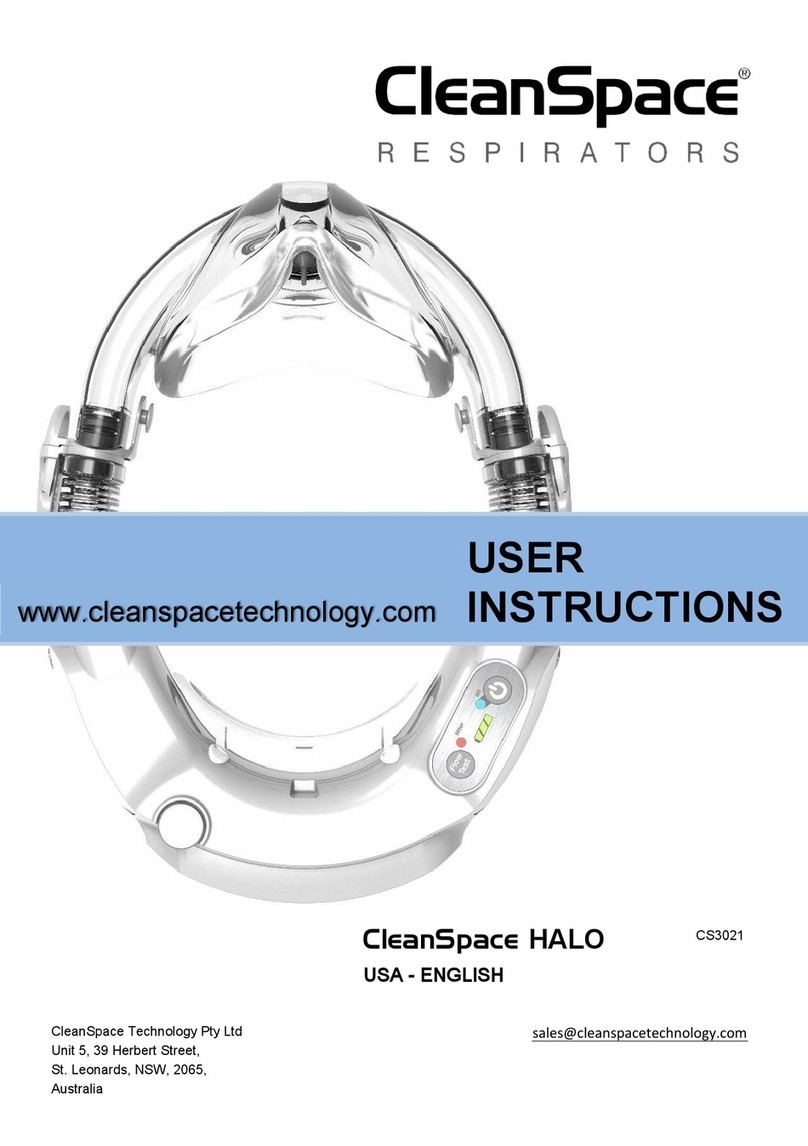
CleanSpace
CleanSpace CS302 User manual

CleanSpace
CleanSpace EX User manual

CleanSpace
CleanSpace HALO User manual
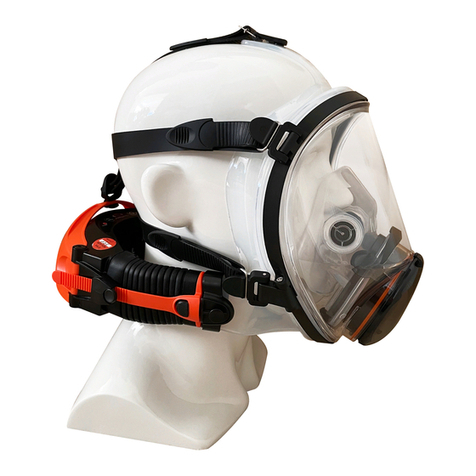
CleanSpace
CleanSpace ULTRA User manual
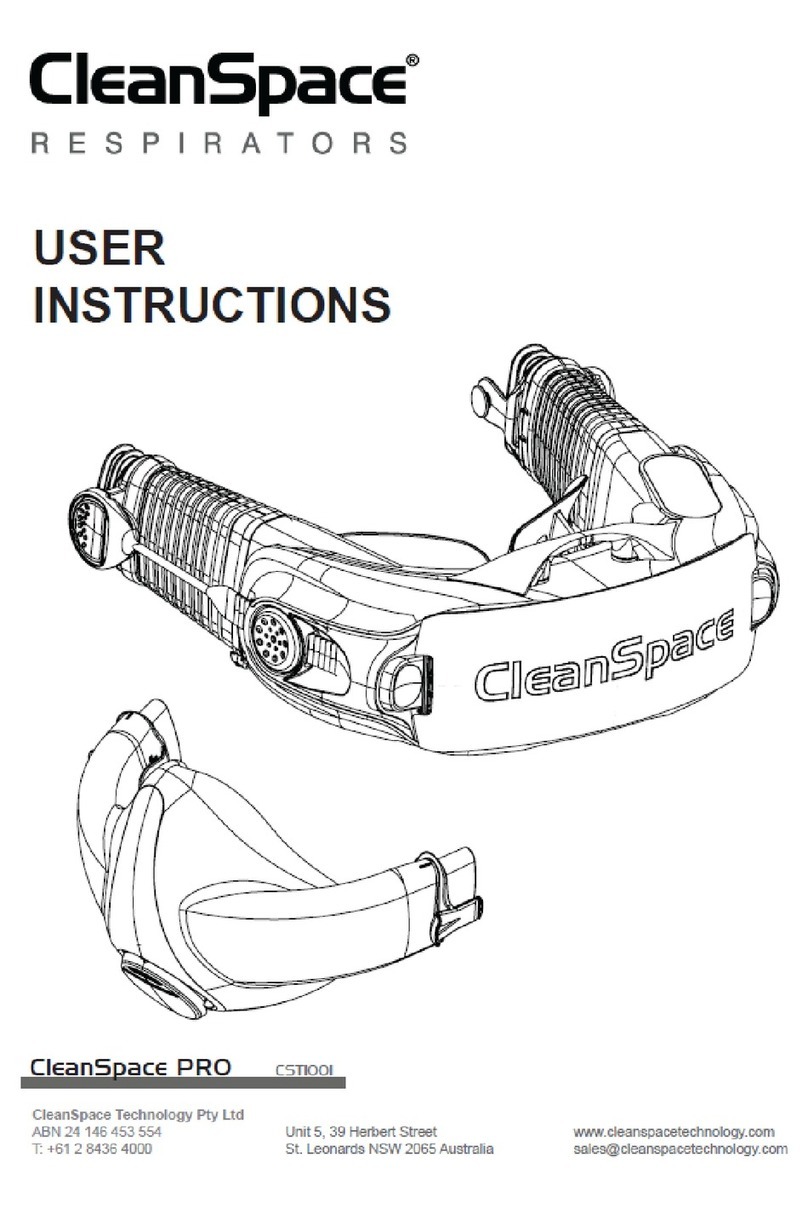
CleanSpace
CleanSpace PRO User manual

CleanSpace
CleanSpace CleanSpace2 User manual


